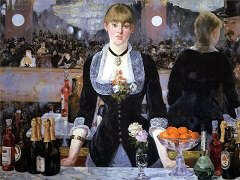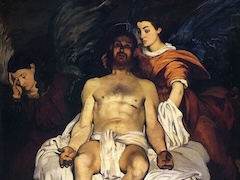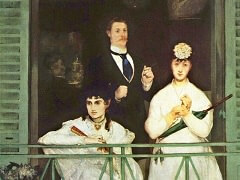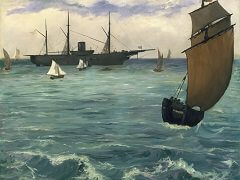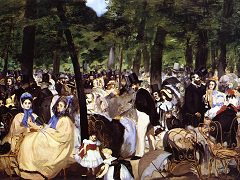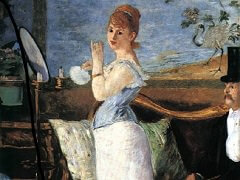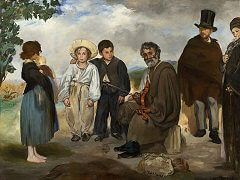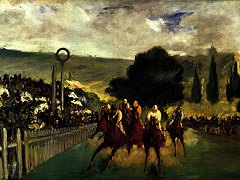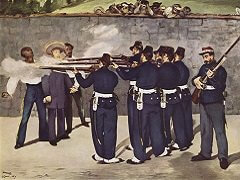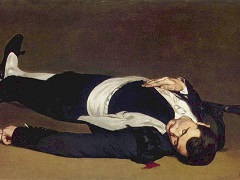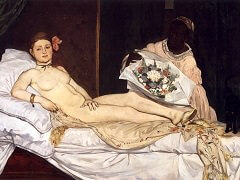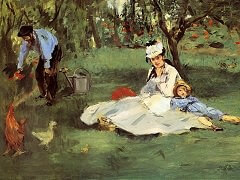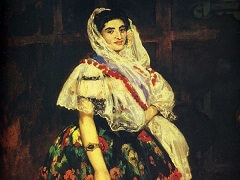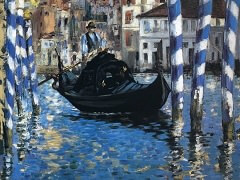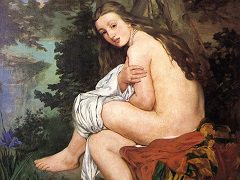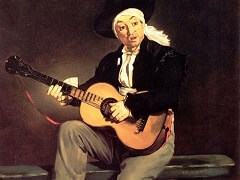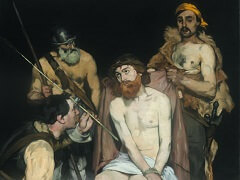Steamboat Leaving Boulogne, 1864 by Édouard Manet
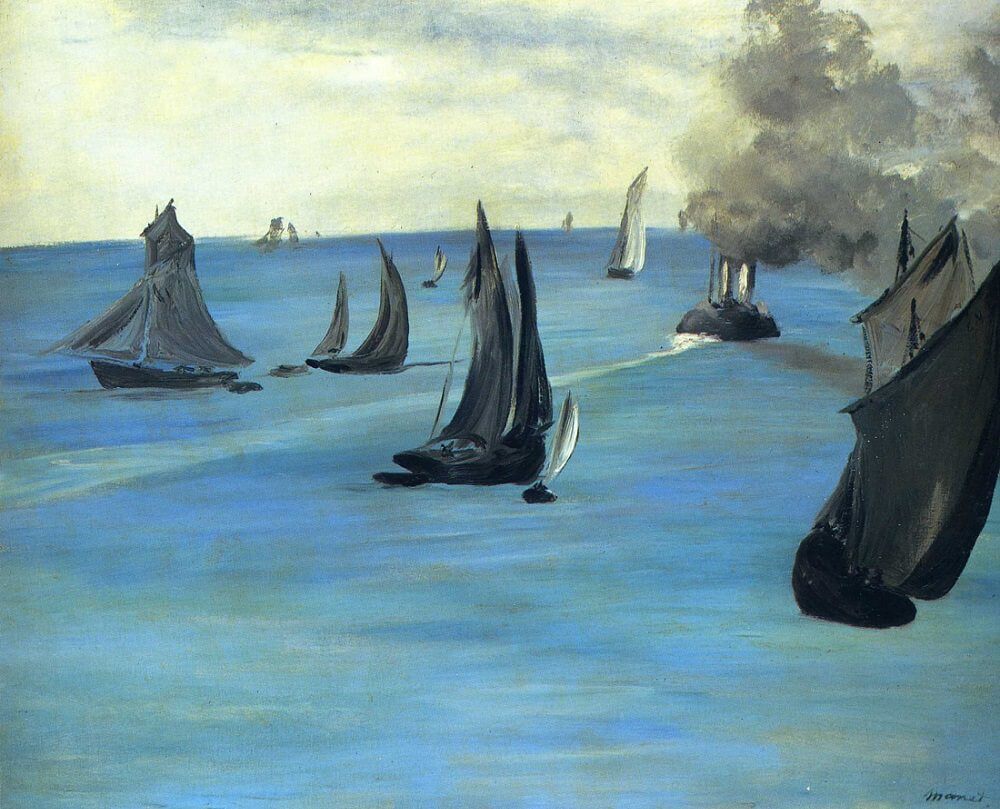
Édouard Manet became one of the most notorious painters in Paris when several of the controversial works he exhibited in the 1863 Salon des Refus�s shocked the public with their bold treatment of form, color, space, and sexually oriented themes. In the summer of the following year, perhaps seeking relief from the harsh criticism he had received, Manet left Paris for Boulogne-sur-Mer, a city on the northern Atlantic coast of France, where he painted marine subjects and still lifes of fish. He finished the still lifes there, but did not complete the marine paintings, including Steamboat Leaving Boulogne, until he returned to Paris. These works represent a breakthrough for the artist; although his bold, flat brushwork outraged his critics, it inspired his Impressionist colleagues in the next decade.
Steamboat Leaving Boulogne can be considered the most striking marine painting that Manet made during this period. It has a high horizon line and is filled with a wall-like expanse of water against which various ships are represented. Like his peer artists such as Monet and Van Gogh, Manet was heavily influenced by Japanese art. The raised horizon, flattened objects and space, and asymmetrical composition were inspired by Japanese woodblock prints, which had become extremely popular in France at the time. Anticipating the sketchlike Impressionist style, Manet rendered the water in lively horizontal strokes of blue and green paint that allowed the weave of the canvas to bleed through in places. Such evidence of the canvas emphasizes the flatness of the picture surface, while the scale of the boats, slight narrowing of strokes toward the horizon, and diagonal direction of the trailing foam and smoke suggest receding space.

